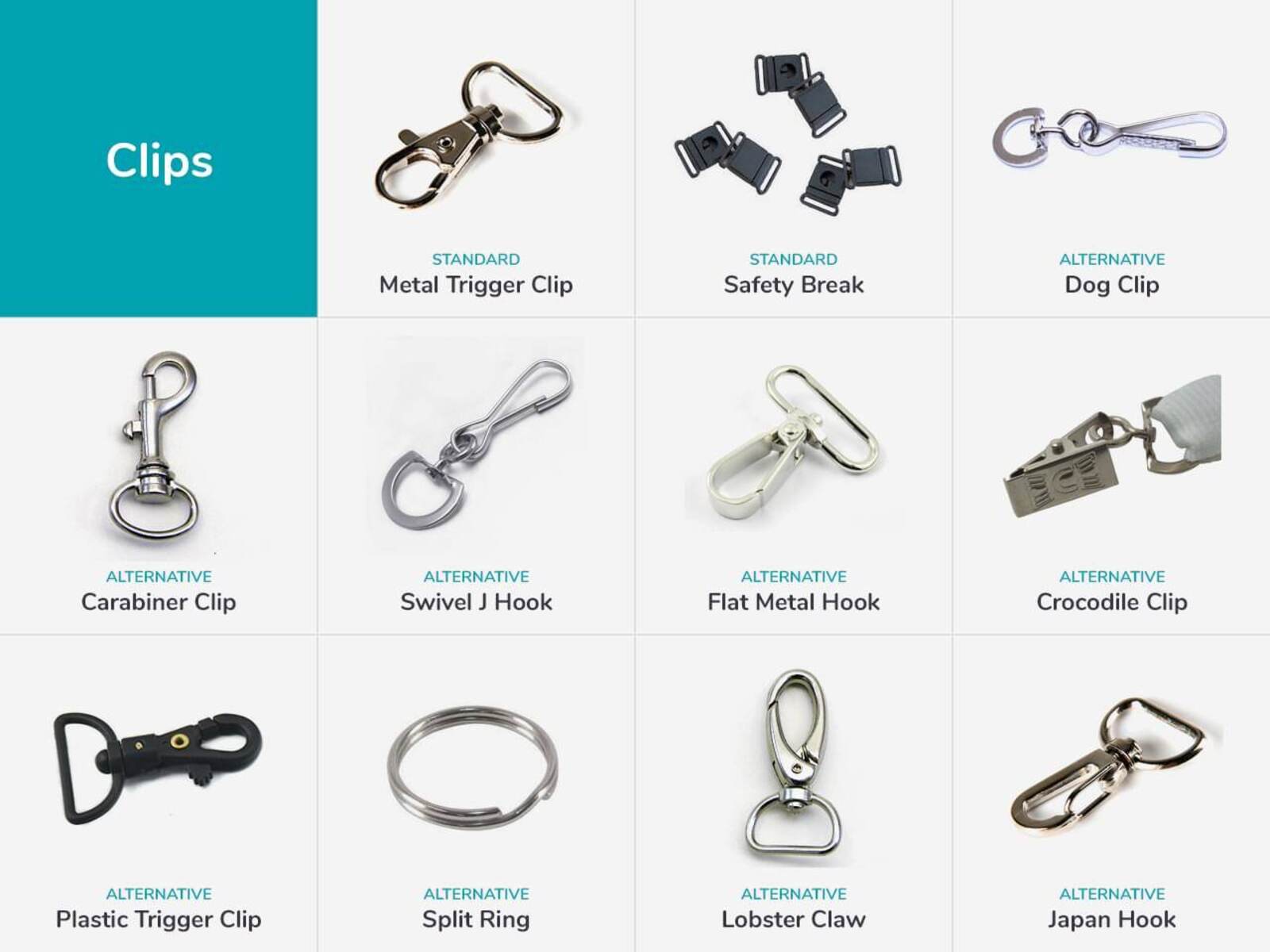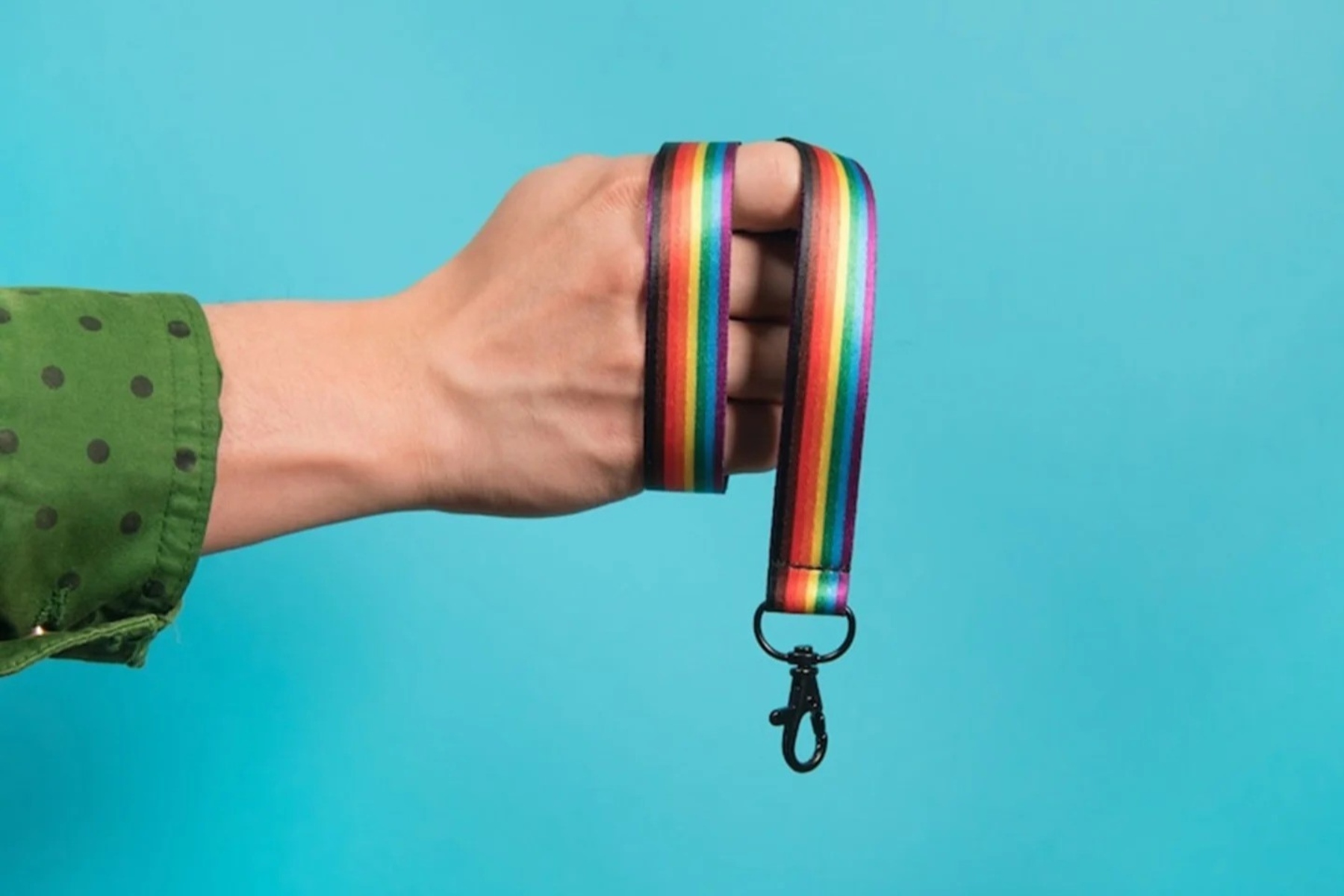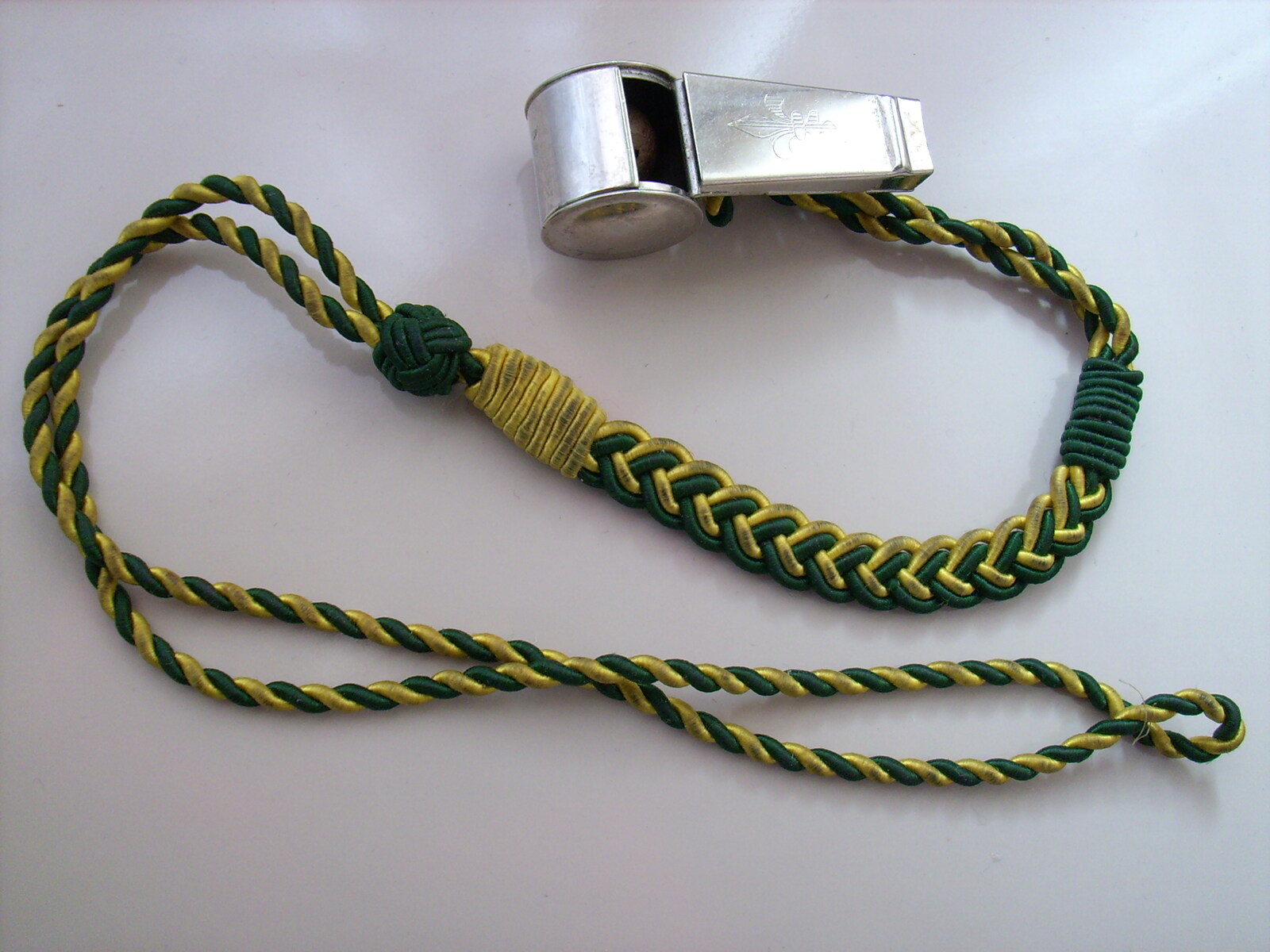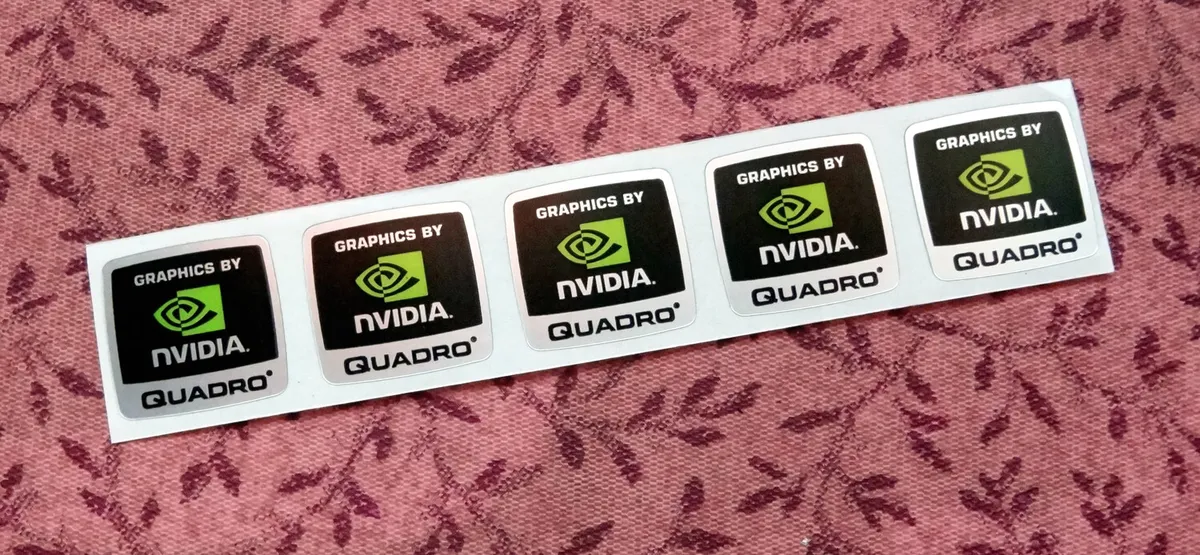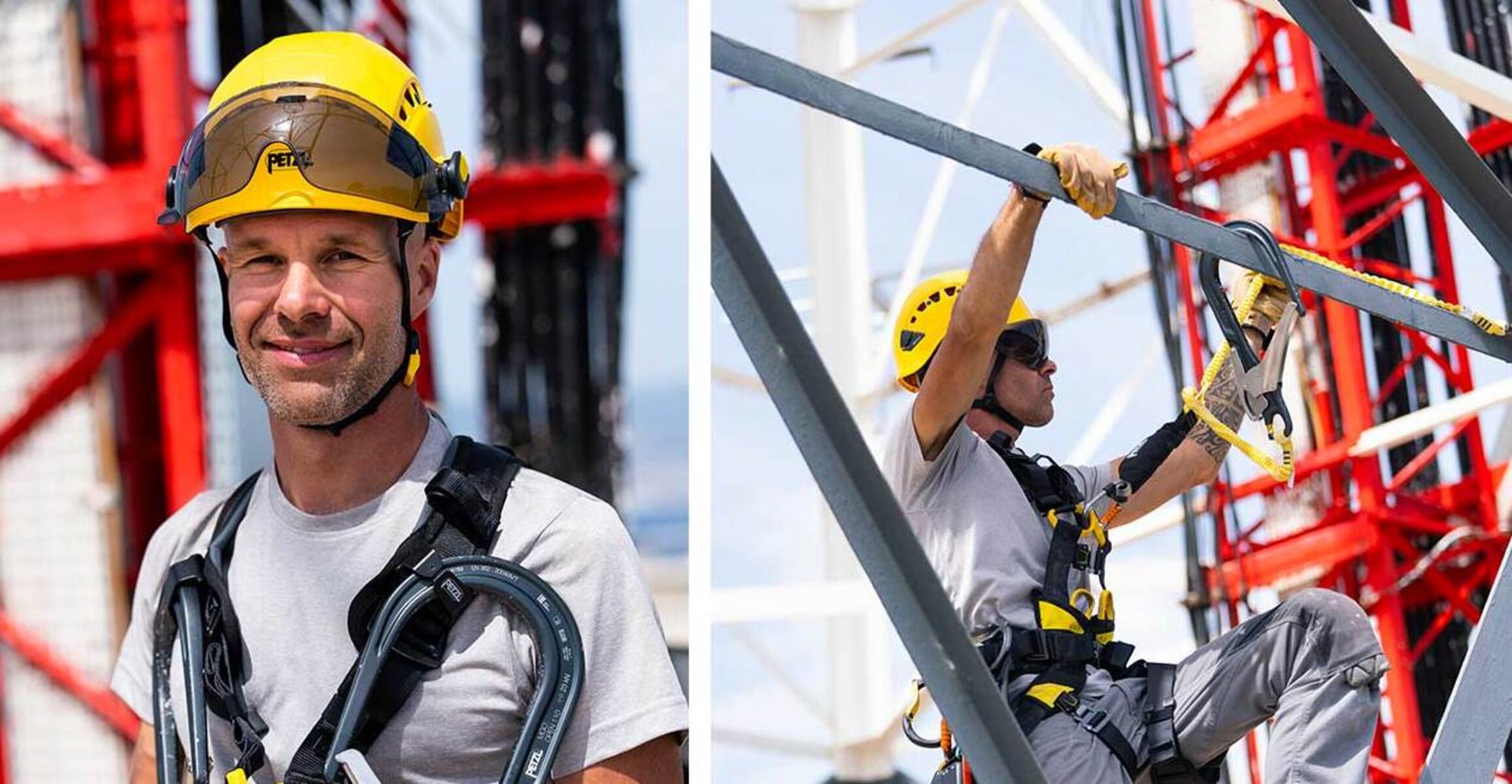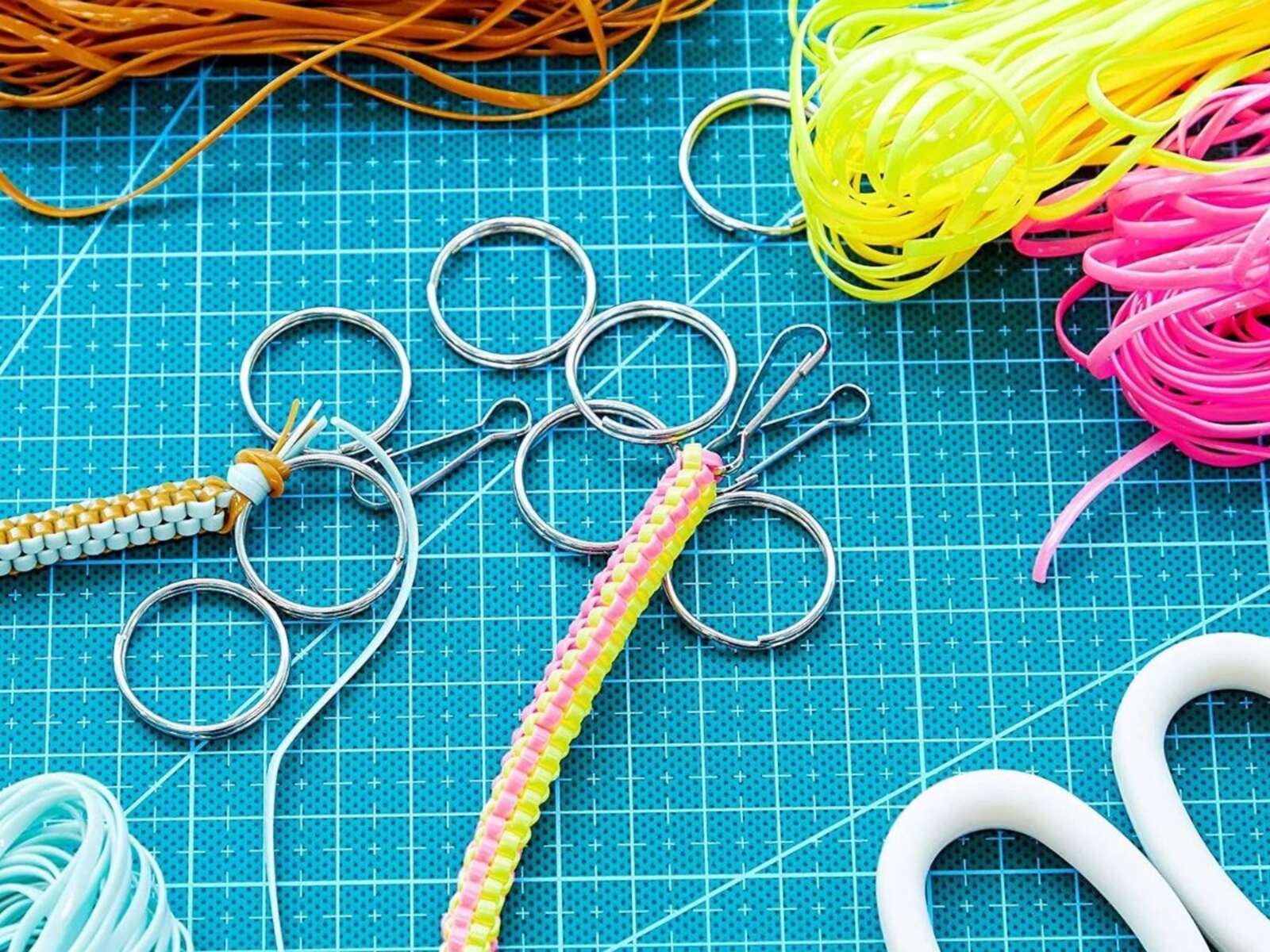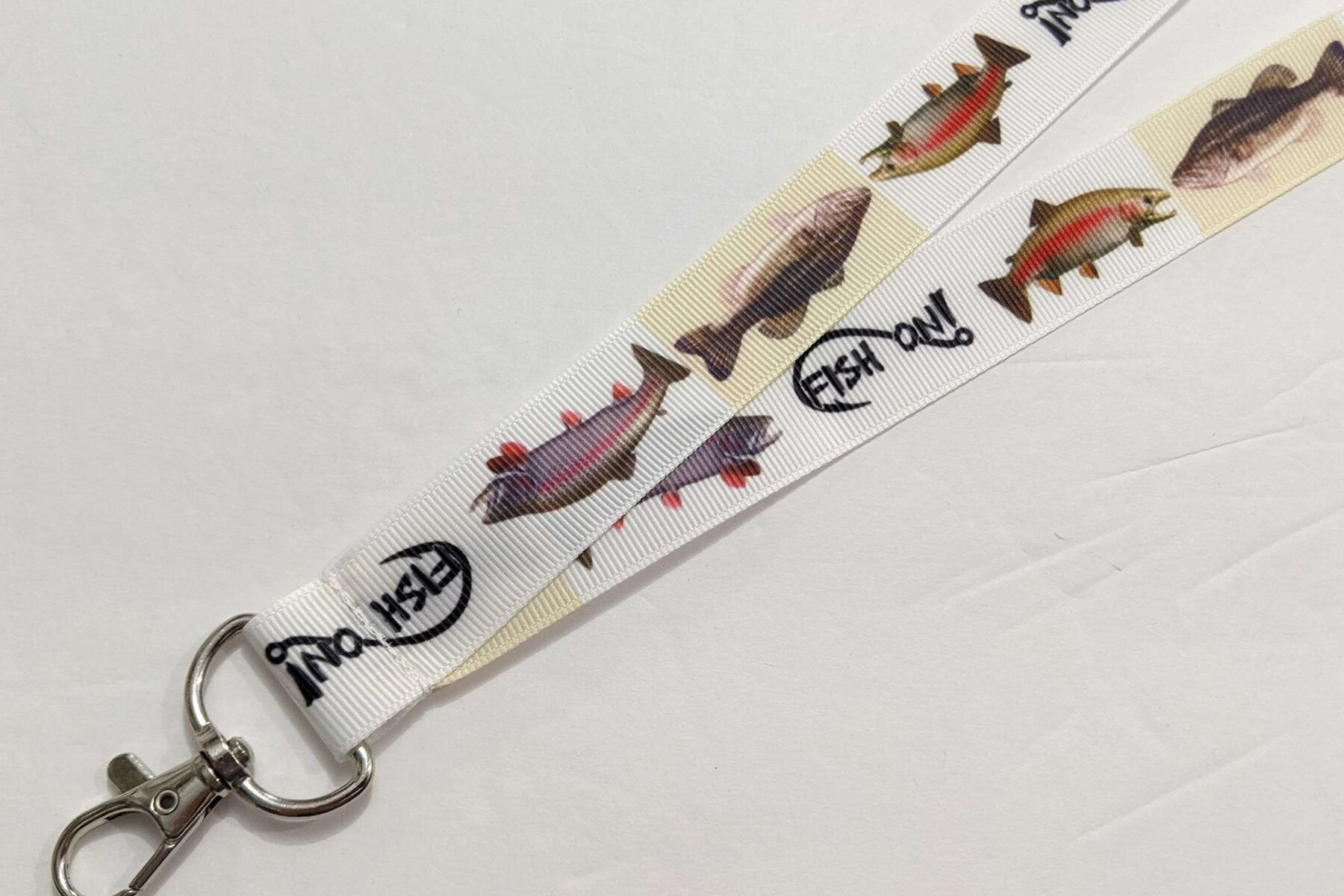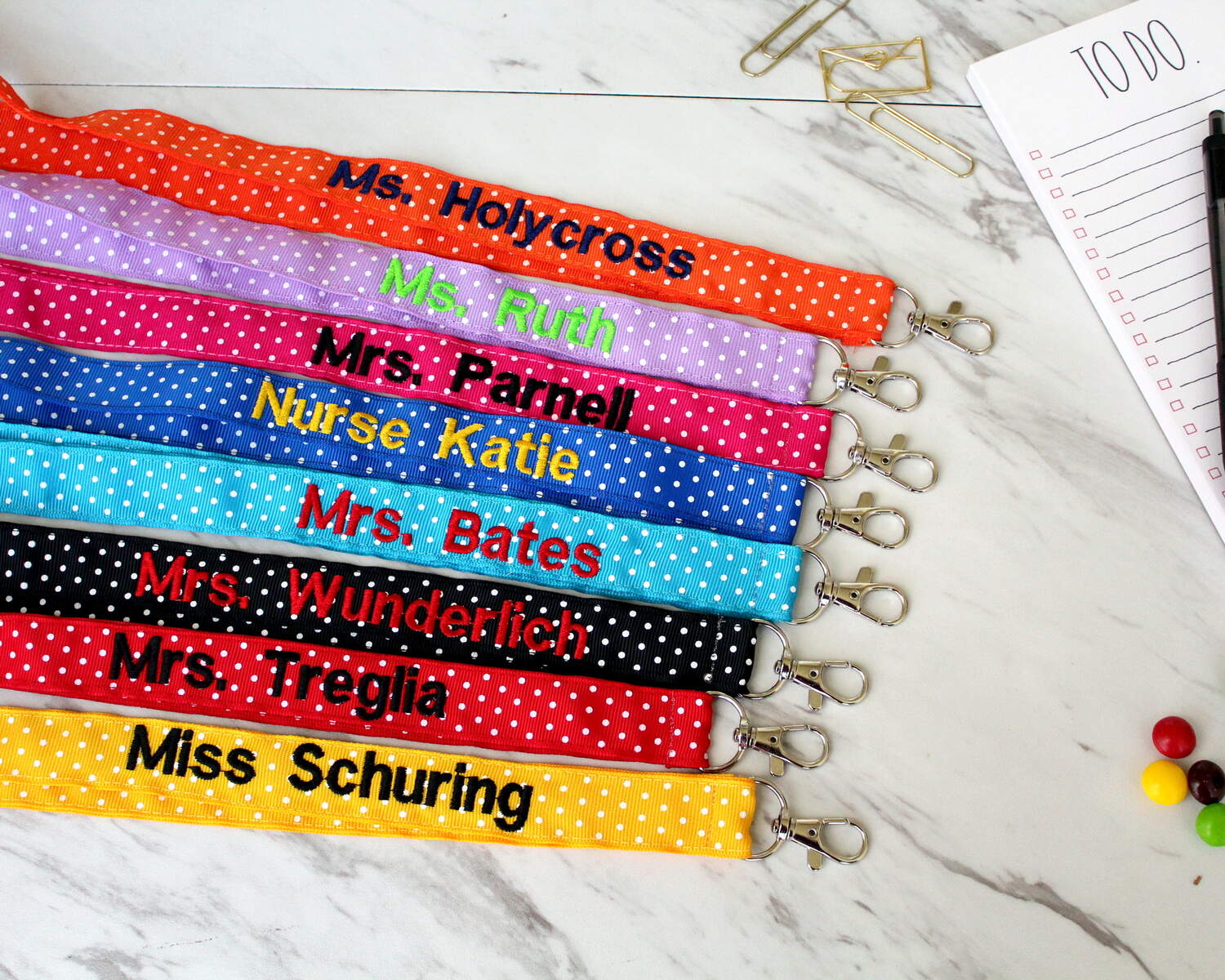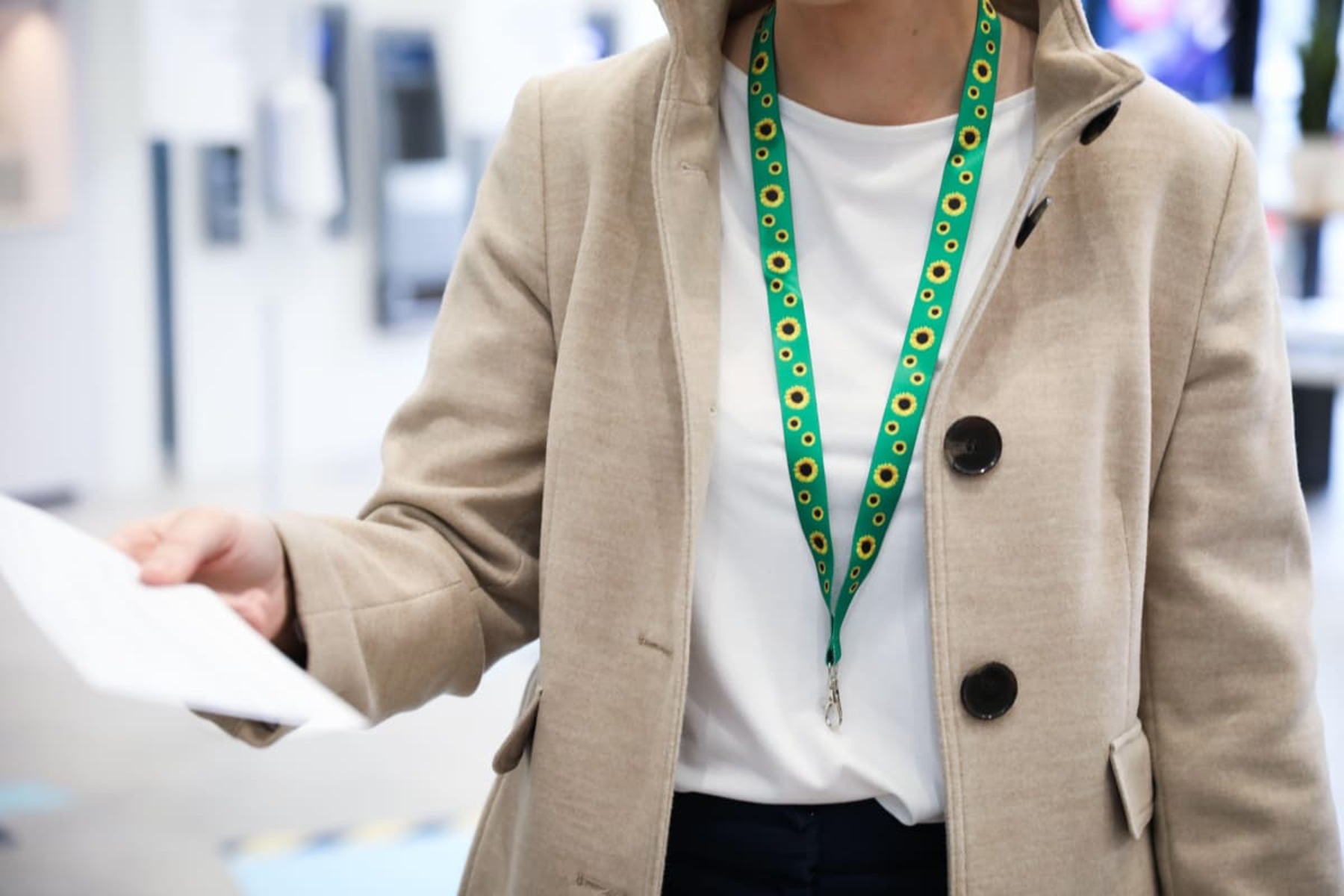Introduction
Clips on lanyards play a crucial role in keeping our everyday items secure and easily accessible. Whether it's an ID badge, keys, or a USB drive, the clip on a lanyard serves as a reliable attachment, allowing us to keep our essentials close at hand. However, have you ever wondered about the specific name of the clip on your lanyard? Understanding the different types of clips and their names can provide valuable insights into their functionality and help you make informed decisions when choosing lanyards for various purposes.
In this comprehensive guide, we will delve into the world of lanyard clips, unraveling the mystery behind their names and shedding light on the significance of this knowledge. By the end of this journey, you will emerge with a newfound understanding of the clips adorning your lanyards and the vital role they play in our daily lives. So, let's embark on this enlightening exploration and uncover the essential details about lanyard clips that often go unnoticed.
Understanding the Different Types of Clips
When it comes to lanyards, the type of clip attached to the end can vary significantly, and each type serves specific purposes based on the intended use of the lanyard. Understanding the different types of clips is essential for selecting the most suitable option for your needs. Let's explore some of the common types of clips found on lanyards and their unique characteristics:
1. Lobster Claw Clasps
Lobster claw clasps are among the most popular types of lanyard clips. Resembling the shape of a lobster's claw, these clasps feature a spring-loaded gate that opens and closes to secure items in place. They are widely favored for their ease of use and secure fastening, making them ideal for holding ID badges, keys, and small accessories.
2. Swivel J-Hooks
Swivel J-hooks are another prevalent type of lanyard clip. These hooks feature a simple yet effective design, with a curved shape that allows items to be easily attached and detached. The swivel feature adds flexibility, enabling the attached items to rotate without tangling the lanyard.
3. Bulldog Clips
Bulldog clips are recognizable for their strong and sturdy grip. These clips, resembling the jaws of a bulldog, provide a firm hold on items, making them suitable for securing heavier objects such as electronic devices or tools. Their robust design ensures that items remain securely attached to the lanyard.
4. Split Ring Attachments
Split ring attachments are commonly used for holding keys and other items with small attachment holes. These circular rings can be easily threaded onto the lanyard and provide a reliable way to keep multiple keys or accessories organized and accessible.
5. Carabiner Clips
Carabiner clips, inspired by the design of rock-climbing carabiners, offer a secure and versatile attachment solution. Their spring-loaded gate allows for quick and convenient attachment of various items, making them popular for outdoor activities and everyday use.
Understanding the distinct features and functionalities of these different types of clips empowers individuals to make informed decisions when selecting lanyards for specific purposes. By recognizing the unique characteristics of each clip, it becomes possible to choose the most suitable option based on the intended use and the items to be secured.
This insight into the diverse world of lanyard clips sets the stage for a deeper exploration of their significance and the impact of knowing the names of these clips. Let's continue our journey by unraveling the importance of understanding the names of lanyard clips and the valuable insights it can provide.
Importance of Knowing the Name of the Clip
Understanding the names of the clips adorning lanyards holds more significance than meets the eye. It provides valuable insights into the specific functionalities and characteristics of each clip, enabling individuals to make informed decisions when selecting lanyards for various purposes. By knowing the name of the clip, individuals can communicate their preferences effectively when ordering custom lanyards, ensuring that the chosen clips align with their specific needs and intended use.
Moreover, familiarity with the names of lanyard clips facilitates seamless communication in professional settings. For example, in a corporate environment, being able to articulate the type of clip required for ID badge lanyards with precision can streamline the procurement process and ensure that the right lanyards are acquired. This attention to detail reflects professionalism and a thorough understanding of the functional requirements, contributing to a cohesive and organized workplace.
Furthermore, knowing the names of lanyard clips empowers individuals to troubleshoot and address any issues related to clip functionality. For instance, if a specific type of clip is causing inconvenience or is not suitable for its intended purpose, being able to identify it by name facilitates targeted discussions for finding alternative solutions. This knowledge also aids in seeking out specific replacement clips or accessories, thereby enhancing the practicality and longevity of the lanyard.
In addition, understanding the names of lanyard clips fosters a sense of appreciation for the intricacies of everyday items. It encourages individuals to recognize the thought and engineering that goes into designing these seemingly small components, elevating their significance beyond mere accessories. This awareness contributes to a deeper understanding of the items we interact with daily, promoting a sense of curiosity and a desire to learn about the functional aspects of the tools we use.
Moreover, knowing the names of lanyard clips can spark creativity and innovation in designing custom lanyards. By understanding the unique features of each clip, individuals can explore creative ways to integrate them into lanyard designs, considering both aesthetics and functionality. This knowledge serves as a catalyst for inventive approaches to lanyard customization, leading to the creation of personalized and purpose-driven lanyard solutions.
In essence, knowing the names of lanyard clips transcends mere identification; it embodies a deeper understanding of functionality, communication efficiency, troubleshooting capabilities, and creative potential. This knowledge enriches the lanyard experience, elevating it from a simple accessory to a thoughtful and purposeful tool that seamlessly integrates into our daily lives.
Common Types of Clips Used on Lanyards
Lanyards are versatile accessories designed to keep essential items secure and easily accessible. The effectiveness of a lanyard greatly depends on the type of clip attached to it. Understanding the common types of clips used on lanyards provides valuable insights into their functionalities and aids in selecting the most suitable option for specific needs.
1. Lobster Claw Clasps
Lobster claw clasps are widely recognized and favored for their practicality and reliability. Resembling the shape of a lobster's claw, these clasps feature a spring-loaded gate that opens and closes to secure items in place. This design allows for easy attachment and detachment of items, making them ideal for holding ID badges, keys, and small accessories. The secure fastening provided by lobster claw clasps ensures that items remain firmly in place, offering peace of mind during daily use.
2. Swivel J-Hooks
Swivel J-hooks are characterized by their simple yet effective design. The curved shape of these hooks allows for easy attachment and detachment of items, while the swivel feature adds flexibility, enabling the attached items to rotate without tangling the lanyard. This versatility makes swivel J-hooks suitable for various applications, including holding ID badges, keys, and lightweight accessories.
3. Bulldog Clips
Bulldog clips are renowned for their robust grip and sturdiness. With a design resembling the jaws of a bulldog, these clips provide a secure hold on items, making them suitable for securing heavier objects such as electronic devices or tools. The strong grip offered by bulldog clips ensures that items are firmly attached to the lanyard, making them a reliable choice for demanding environments.
4. Split Ring Attachments
Split ring attachments are commonly used for holding keys and items with small attachment holes. These circular rings can be easily threaded onto the lanyard and provide a reliable way to keep multiple keys or accessories organized and accessible. The practicality and simplicity of split ring attachments make them a popular choice for lanyards used to carry keys and small tools.
5. Carabiner Clips
Inspired by the design of rock-climbing carabiners, carabiner clips offer a secure and versatile attachment solution. Their spring-loaded gate allows for quick and convenient attachment of various items, making them popular for outdoor activities and everyday use. The durability and ease of use provided by carabiner clips make them well-suited for lanyards used in active and dynamic settings.
Understanding the unique characteristics and applications of these common types of clips empowers individuals to make informed decisions when selecting lanyards for specific purposes. By recognizing the distinct features of each clip, it becomes possible to choose the most suitable option based on the intended use and the items to be secured. This knowledge enhances the functionality and practicality of lanyards, ensuring that they effectively serve their intended purposes in various environments.
How to Identify the Name of the Clip
Identifying the name of the clip on a lanyard involves a simple yet insightful process that allows individuals to gain a deeper understanding of the specific type of clip in use. By following these steps, one can confidently recognize and articulate the name of the clip, fostering a sense of familiarity with the lanyard's attachment mechanism.
-
Visual Examination: Start by visually examining the clip attached to the lanyard. Pay attention to its shape, size, and distinctive features. Different types of clips exhibit unique characteristics, such as the presence of a spring-loaded gate, a swivel mechanism, or a sturdy grip. By closely observing these visual cues, one can begin to discern the specific attributes that define the clip.
-
Comparison with Reference Images: Utilize reference images or illustrations of common lanyard clips for comparison. Online resources and catalogs often provide visual representations of various clip types, offering a valuable point of reference for identification. By comparing the observed features of the clip with those depicted in reference images, one can narrow down the possibilities and identify the closest match.
-
Research and Classification: Engage in research to categorize the observed clip based on its defining characteristics. Understand the distinct functionalities and applications of different clip types, such as lobster claw clasps, swivel J-hooks, bulldog clips, split ring attachments, and carabiner clips. By classifying the clip according to its unique attributes, one can align it with the corresponding category and name.
-
Consultation and Verification: Seek input from knowledgeable sources, such as lanyard suppliers, manufacturers, or online communities specializing in accessories and attachments. Describe the observed features of the clip and inquire about its specific name and classification. Verification from experts or experienced individuals can provide valuable confirmation and further enhance one's understanding of the clip.
-
Documentation and Reference: Document the identified clip name and its corresponding characteristics for future reference. Create a personal reference guide or catalog detailing the names and features of various lanyard clips. This documentation serves as a valuable resource for building familiarity with different clip types and refining one's ability to identify them accurately.
By following these steps, individuals can confidently identify the name of the clip on a lanyard, enhancing their knowledge of lanyard accessories and fostering a deeper appreciation for the intricacies of these everyday items. This understanding empowers individuals to make informed decisions when selecting lanyards and effectively communicate their preferences based on the specific functionalities of the clips.
Conclusion
In conclusion, the world of lanyard clips is a fascinating realm that often goes unnoticed in our daily lives. However, delving into the intricacies of these small yet essential accessories reveals a wealth of insights and practical significance. By understanding the names and unique characteristics of lanyard clips, individuals gain valuable knowledge that transcends mere identification; it embodies a deeper understanding of functionality, communication efficiency, troubleshooting capabilities, and creative potential.
The journey through the diverse types of clips, including lobster claw clasps, swivel J-hooks, bulldog clips, split ring attachments, and carabiner clips, illuminates the diverse functionalities and applications offered by each. This understanding empowers individuals to make informed decisions when selecting lanyards for specific purposes, ensuring that the chosen clips align with their unique needs and intended use.
Moreover, familiarity with the names of lanyard clips fosters seamless communication in professional settings, streamlining procurement processes and reflecting professionalism and attention to detail. It also enables individuals to troubleshoot and address any issues related to clip functionality, enhancing the practicality and longevity of the lanyard.
Recognizing the names of lanyard clips also fosters a sense of appreciation for the thought and engineering that goes into designing these seemingly small components. It encourages individuals to recognize the significance of everyday items and promotes a sense of curiosity and a desire to learn about the functional aspects of the tools we use.
Furthermore, this knowledge can spark creativity and innovation in designing custom lanyards, leading to the creation of personalized and purpose-driven lanyard solutions. By understanding the unique features of each clip, individuals can explore creative ways to integrate them into lanyard designs, considering both aesthetics and functionality.
In essence, knowing the names of lanyard clips enriches the lanyard experience, elevating it from a simple accessory to a thoughtful and purposeful tool that seamlessly integrates into our daily lives. It is through this deeper understanding that we can fully appreciate the significance of these small yet indispensable components that play a vital role in keeping our essentials secure and easily accessible.







